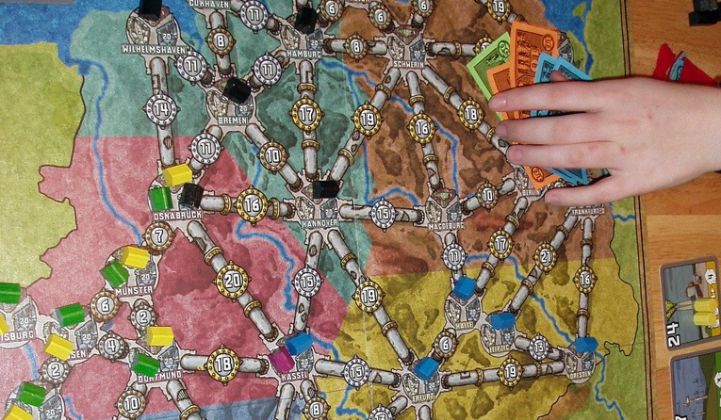We’ve covered the worries the U.S. utility industry has about recovering the costs of their multi-billion-dollar smart grid investments. Seems like German utilities are worried in much the same way.
Consulting firm Steria Mummert polled 100 German utility executives and found that only half of them wanted to spend money on smart grid between now and 2014. That’s compared to three-quarters who planned to spend on renewable energy, and 30 percent that planned to spend on conventional fossil fuel sources like natural gas.
One has to take surveys like these with a grain of salt, of course. Europe’s financial crisis has put the entire continent’s industry on alert, crimping spending plans in the short term. Over the long haul, Europe’s smart grid spending is expected to grow to €6.8 billion ($8.3 billion) per year by 2016, GTM Research predicts, as national smart meter mandates, grid improvements and utility IT overhauls grow to match the increasingly complex needs of Europe’s green power and energy efficiency mandates.
Still, lack of enthusiasm for smart grid spending is a problem. Like it or not, growing wind and solar power, plus its phase-out of nuclear power, will put increasing strains on Germany’s grid over the coming years. That means that utilities and regulators will have to figure out how to split the cost between the private and public sectors to beef up -- and smarten up -- the grid to manage it, or risk an increasingly unstable power supply.
German utility “decision-makers,” like their counterparts in the United States, are worried about how they’re going to pay for new grid investments, according to Steria’s survey. So far, regulators and government have yet to step in with incentives or policy support for increased spending, which means utilities will have to use existing cash flows to invest, leading to higher power bills for all. "There is a dearth of political models to create relevant incentives," is how Norbert Neumann, energy analyst at Steria, put it.
It’s not as if Europe’s governments don’t know there’s a need for grid spending. Under the European Union’s mandate to achieve one-fifth of all generation from renewable resources by 2020 (excluding big hydropower), regulators are demanding that thousands of kilometers of new transmission and distribution lines be built over the coming years. That’s going to cost €32 billion ($39.7 billion) in the first round of government-mandated investments, and €104 billion ($128 billion) under a 10-year plan announced in June.
Beyond these costs of getting renewable power -- mainly offshore wind power -- onto the grid, there's the problem that wind and solar don't produce power steadily, at a controllable rate. That intermittency has to be managed -- usually, in the case of big wind farms, via backup natural-gas-fired power plants that can be called on on short notice. In grids big enough to balance multiple generation sources, or to call on megawatts of demand response capacity, that’s not such a big problem.
But as wind and solar grow to contribute 15 percent to 20 percent or more of a region’s power, it can become harder to predict and balance out that intermittency. That can lead to big drops that can threaten grid stability, such as has happened in wind-rich Texas and northern Europe -- or you can see wind forced to drop offline when it’s making too much power, such as in the Pacific Northwest.
Germany is on the forefront of these renewable integration challenges. While its 8-percent wind power share in 2011 wasn’t nearly as big as, say, Denmark’s 50 percent, big offshore wind farms are expected to bring Germany more closely in line with its northern neighbor in the coming years. Large-scale grid management, microgrid architectures, virtual power plants, “smart city” projects and connecting plug-in vehicles and household heating units to the grid are some of the ways smart grid projects in Europe are trying to solve the wind balancing problem.
As for solar, Germany saw nearly 25 gigawatts of solar PV installed as of last year and 4.37 gigawatts of solar panels in the first half of 2012, compared to the government target of 2.5 to 3.5 gigawatts for the whole year. While Germany’s wind power grid problems are mainly on the transmission lines, its solar problems are far more local.
About 85 percent of Germany’s solar is tied into low-voltage distribution grids, which can cause local instability problems as clouds pass overhead and voltages sag and surge through inverters, transformers and neighborhood feeder lines.
That’s led German regulators to require solar inverters to perform certain functions, such as power ramping and volt/VAR control, which lend more stability. It’s all part of the VDE AR-N 4105 rules that came into effect for medium-voltage connected solar in 2008 and for low-voltage solar as of January 2012.
In the meantime, governments in France, Spain, the U.K. and Scandinavia have all mandated that their utilities deploy smart meters en masse by the end of the decade or so. (Italy already did its big smart meter rollout with Echelon, and Germany and other countries are taking a less centralized approach.) GTM Research predicts that Europe will deploy 100 million smart meters by 2016, with big contracts expected to be coming as early as next year.



